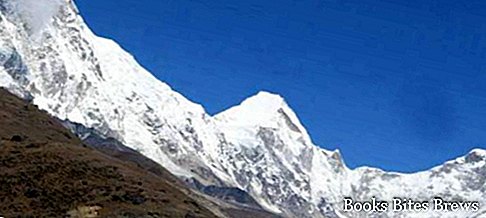Information on the Himalaya, where it is located, morphology, glaciers, climatic effects and mountaineering expeditions with ascent to its highest peaks.
Where is it
The Himalaya mountain range, also called the roof of the world, is located in Asia and forms a barrier between the Plateau of Tibet in the north and the floodplains of India in the south.
In the Sanskrit language, the term Himalaya has the meaning of Eternal Snow House.
Mountains
The Himalayas include very high mountains, including Mount Everest which, with its 8,850 meters of altitude, is the highest in the world.
The southern slope of the Himalaya is characterized by a markedly higher steepness than that of the northern slope.
The valleys are home to numerous glaciers, among which the most famous are those of Zemu, Gangotri and Kanchenjunga.
The lowest glaciers are located at an altitude of around 3000 meters while above 5000 meters there are perennial snow.
The lakes are almost absent, among the few present there are Manasarowar and Rakas.
Climate
The Himalaya mountain range, due to its height and wide extension, has significant effects on the climate, acting as a barrier against the cold north winds and the humid monsoons that blow from the Indian ocean.
In the southern slope of the Himalaya, the phenomena of atmospheric precipitation are very high, while on the northern slope, on the contrary, they are almost absent.
The consequence of the great difference in rainfall is clearly seen by observing the vegetation, practically absent on the Tibet side, quite luxuriant on the India side with tropical forests and woods.
Recommended readings- Himalaya (Asia): information on the abode of eternal snow
- Kathmandu (Nepal): what to see in the capital
- Annapurna (Nepal): the first 8000 to be reached
- Mount Everest: mountaineering excursions
- Nepal (Asia): what to see from the Ganges to the Himalaya
How it looks
Seen from the south, the Himalayas appear as a gigantic sickle, with the main axis above the snow line.
Most of the mountain range is located below the snow line.
Chains
The Himalayan chains can be grouped into four parallel longitudinal belts with variable width, each with different characteristics for a different geological history.
The most characteristic features of the Himalaya chain are the heights of its peaks, which are jagged and steep, with grandiose alpine valleys and glaciers, a topography deeply engraved by erosion, apparently unfathomable river gorges, a diverse flora and fauna and varied climatic conditions.
Glaciers
Ever since ancient times, the great glaciers of the Everest Himalaya range have always faced the greatest challenge for climbers from all over the world who have organized periodic expeditions.




